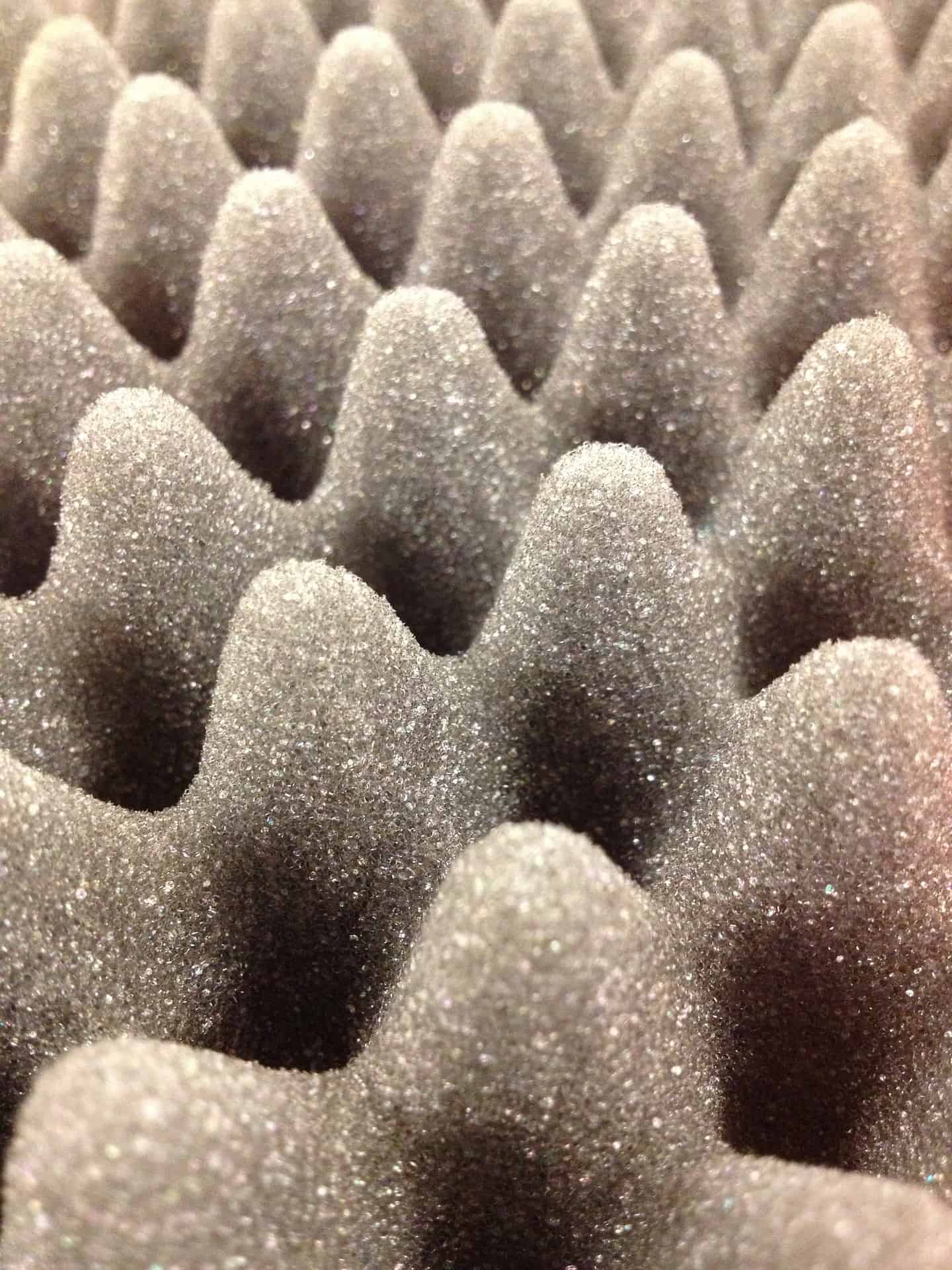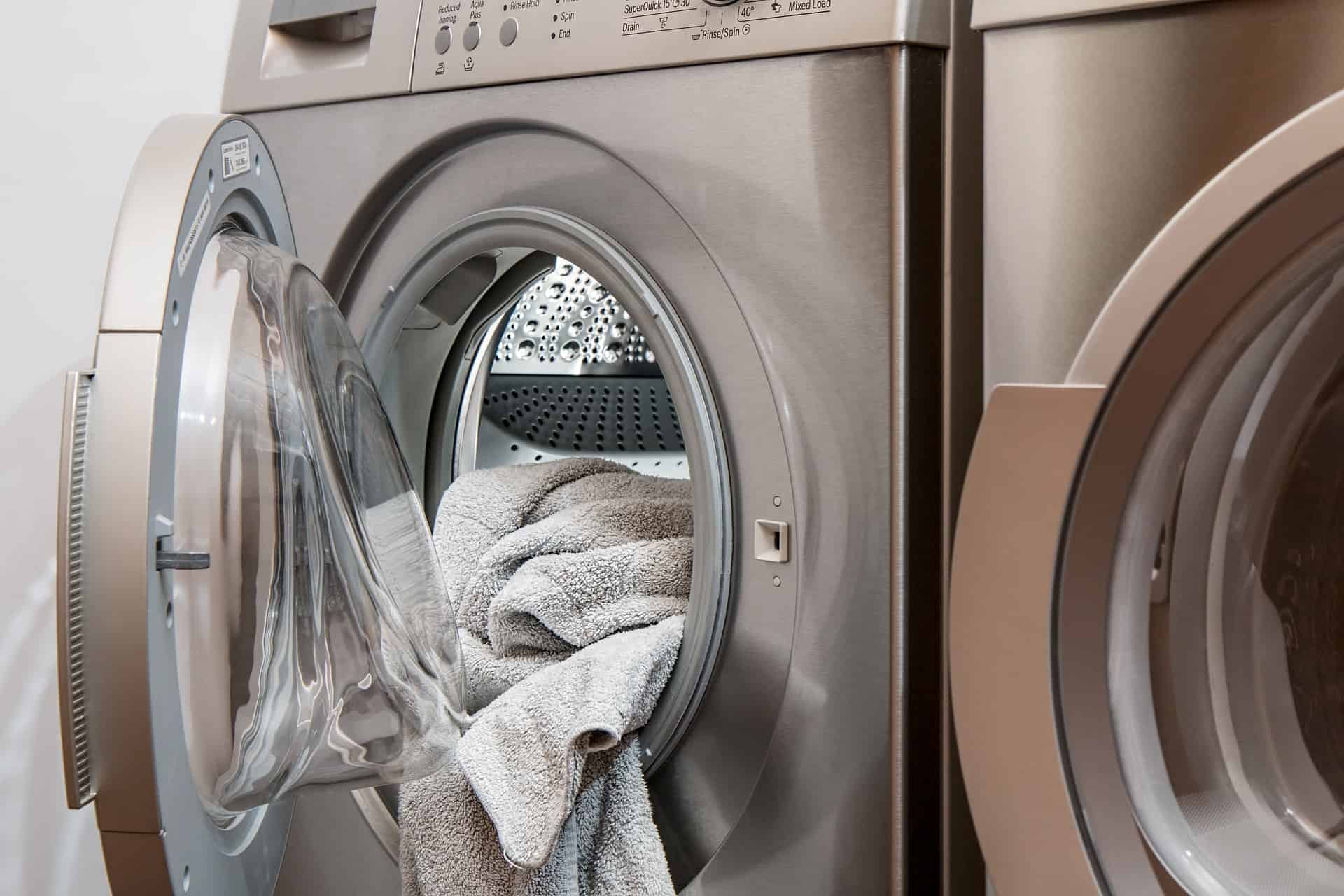
Image via Pixabay
When you’re on the autism spectrum, the qualities that make up a soothing home atmosphere require a lot more consideration. As those diagnosed in childhood grow into adults, they may discover that the specific daily challenges they run into are changing, but the need to have a tranquil living space remains ever-important.
In this guide, we will discuss the modifications you can make to your home to better manage your adult autism. Whether your budget is limited or large, there are a myriad of ways to reduce sensory overload at home, and we’ll take into account the particular obstacles adults with autism may face. Often, there are changes you can make right away that will make an immediate, positive impact on your quality of life; the rest you can chip away at as needed.
Optimizing Your Home: What Sensory Issues May Arise, and How to Limit Chances for Overload
Sound Reduction
Noise control is crucial when you’re an adult on the autism spectrum. Sounds that others may hardly even notice can be a major distraction, and noise can carry from room to room despite everyone’s best efforts to be quiet. For some, it’s an unbearable combination of household commotion and the incessant whirring and humming of household appliances. While addressing these issues, don’t hesitate to ask for a loved one’s help if an area, machine, or room is particularly overwhelming for you.
Because of the way sound waves move and reverberate, the flooring in your home plays an important role in noise control. Carpet does the best job of absorbing sound — it’s also more pleasant for those with tactile sensitivity who prefer softer, warmer textures — and will be ideal in bedrooms and living spaces. If mass carpet installation isn’t an option for your budget, adding large area rugs or carpet tiles can make a drastic difference with sound absorption. If you need a harder surface for mobility reasons, skip the rugs and consider re-flooring with cork or vinyl. Both materials are conducive to walkers, wheelchairs, and other mobility devices, but because they’re softer, will help reduce noise pollution.
Next, consider your walls. If you’re willing to get more labor-intensive work done on your home, adding an extra layer of drywall is an excellent way to soundproof. If you’ve got the cash and time to do the entire house, it could be well worth the investment, but often, it’s enough to focus on problem areas. Concentrate on not only spaces that you need quiet (like your bedroom), but those that tend to have more noise in general: your child(ren)’s bedroom, the living room, playrooms, and the kitchen, for instance.
If you don’t want to go through the hassle of drywall, there are all kinds of options for adding soundproofing materials to the walls. Noise-reducing insulation, foam, and paint can be installed to varying degrees in all rooms of the house. MLV lining creates a strong sound barrier, is easy to work with, and can be added to nearly any surface. The space doesn’t have to be covered floor to ceiling, and some families might prefer to focus their efforts on problem areas; for example, if your bedroom is right next to the living room and you often hear your partner watching TV after you’ve gone to bed, prioritize soundproofing those shared walls.
Not happy with the appearance of professional-grade soundproofing materials? Try carpet tiles instead — they’re less expensive, more attractive, and many can be adapted to wall use. Just be sure to avoid patterned, “busy” designs to avoid visual sensory overload.

Image via Pixabay
One of the easiest ways to soundproof specific walls in your home is to use bookcases, shelves, and cabinets you already have to create a buffer. Place these fixtures on noisy shared walls to block incoming sound from moving through, and load up the shelves with books, plants, and other knick knacks to create even more sound barriers. The trick here is that the fixture must have doors or other covering so that the full shelves aren’t constantly on display; clutter creates a stressful environment for most people, and it can be overwhelming for someone on the autism spectrum. Add doors to existing bookcases, buy new ones, or keep it simple by draping a solid-colored, heavyweight blanket, comforter, or quilt over the front of a bookcase. (Note that this could be a hazard in homes with small children or pets.) Assess what will work best for your family, budget, and noise issues, and don’t forget to earthquake-proof as needed.
The flooring and walls of the bathroom will be more of a challenge to soundproof, especially if you’re working with tile. Installing carpet is perhaps the most efficient way to cut down on noise, and while some see it as “old-fashioned,” there are plenty of ways to make it work for your home. Vinyl is another excellent trade for tile floor, as is cork in some cases, though cork will be prone to swelling and warping because of the constant moisture. Using a large bath mat or multiple mats as sound buffering is good for a quick fix as long as there are no mobility issues; you can even add them to the walls. If changing the walls completely is an option, consider simply removing the tile and painting the walls. You can add the same kind of soundproofing adaptations as elsewhere in the house, though you’ll need to keep the humidity in mind for any adhesive coverings.
You might not think about your house having “holes,” but that’s what doors, windows, and vents are — and sound waves can travel through even the tiniest of spaces. Do your weatherproofing due diligence on windows and exterior doors, and check each for drafts that might need caulk or other extra patching. Take it a step further by adding weatherstripping to interior doors, especially those around bedrooms, playrooms, and common areas. Even adding a slide-on weatherstrip to the bottom of your child(ren)’s playroom door, for example, can make a difference in overall noise reduction.

Image via Pixabay
If you have a big budget, consider replacing single pane windows with double pane (or higher). Storm doors and windows can also act as sound buffers in addition to protection from adverse weather. Decorative front doors, especially those that have a lot of glass, can be swapped out for something sturdier — ideally, a solid, thick wood. If you have thin sliding glass doors that seem to let in a lot of outside noise, you have several options depending on your needs and situation: if the doors provide much-needed natural light in your home, replace them with a thicker glass. If you have light sensitivity, or if you find outside commotion distracting, replace the doors completely. If you’re somewhere in between, consider thick, tinted sliding glass doors: you’ll retain some natural light, but the tint can make the view less distracting.
Interior doors can also be replaced to reduce sound transfer, and if you have hollow-core doors, replacement is necessary. Switch to solid-core throughout the house, and consider getting a slightly longer door to reduce the space between the bottom of the door and floor — remember, noise escapes through any crevice it can! You can even try adding MLV lining to the door as an additional barrier, especially in high-traffic areas.
Once you’ve taken care of your weatherproofing duties on windows, it’s time to focus on creating a new layer of protection. Heavy drapes or curtains can help absorb outside sound before it enters the house; there are even those designed specifically for noise reduction. Stick with solid colors (no patterns or designs). You might be able to create a makeshift sound barrier by placing books, knick knacks, art, or other heavy materials on window sills, but be mindful of the hazard it may pose to children, pets, or anyone in an earthquake-prone region. Additionally, you don’t want to block potential fire exits. Use this method only as a temporary fix, and make sure to keep curtains or shades closed to hide the clutter.
Vents are tricky when it comes to noise control because there’s only so much you can do without inhibiting their effectiveness. First, hire a professional to ensure that your heating/cooling system is working properly, especially if it seems to be noisier than it should be. Newer systems are usually made to operate more quietly than older ones, so consider an upgrade if you can. Noisy vents may call for a cleaning; you can do it yourself or hire a professional if a full, deep clean is in order. There may be other soundproofing options for your ventilation system, but you’ll need to consult a professional who can examine your system and vents specifically.
There are going to be some objects in your home that will make noise no matter what: the clothes washer and dryer, computer(s), dishwasher, refrigerator/ice maker, and gaming systems are just a few. Find a new, quieter spot for as many as you can. If you have a wireless router that works well but makes a high-pitched buzzing, move it to a closet to muffle the sound. If your spouse’s laptop has a loud fan that bothers you, try creating a workspace or office in an area of the house you’re rarely in. Relocating large appliances may take more extensive adaptations, but might be worth the investment if you have the budget for it. Moving the dryer to the garage, for instance, could make an important difference in noise pollution if you have multiple children with a regular flow of laundry.

Image via Pixabay
Ideally, loud appliances could be placed in carpeted areas or with carpet tiles beneath them to reduce the impact of their vibrations (and thus, overall noise). However, that won’t always be an option — as a general rule of thumb, if the machine uses water, it can’t be on carpet. You can, however, place cork, rubber, or vinyl pads under the unit to quell the sound. Some machines may even be ready for an upgrade and, again, they tend to be quieter the newer they are.
Certain appliances and machines are going to make noise no matter what; even if it’s a new machine, the quietest setting may still be irritating to your sensitive hearing. If you or your partner is handy, you might be able to make some repairs and modifications that will make a big difference. Some “fixes” are small but effective — adjusting the leveling feet on your laundry machines, for instance, can shift a racket to a hum. If the machines themselves are in good working order, try affixing carpet tiles or MLV lining to the walls and/or doors of the room.
Creating a Soothing Visual Setting
Step one: declutter. Even if your home is generally organized, going through each room with a decluttering eye can help you catch a lot of “visual noise” you might not even realize is bothering you. Implement storage that keeps things tidy and out-of sight: no opaque or glass cabinets that will easily allow you to see what’s behind them. Create a clean-up routine that you and each member of the household adheres to each night. Make it fun for your kids and a mini competition between you and your partner; in time, tidying up will feel more like a game than a chore and your house, not to mention your mental well-being, will reap the benefits.
Color also plays a crucial role in your home’s visual space. Certain hues tend to be troublesome for those on the adult autism spectrum, including shades of yellow, red, and orange. White can also be overwhelming, particularly in rooms with a lot of light to reflect. Unless you’ve personally found these colors bring you solace (and don’t worry if you’ve deviated from the “norm” or if your preferences have changed in adulthood), avoid them completely. Instead, go for soothing tones of blue, purple, or green. Additionally, you could go with earth tones like brown, black, and grey. Choose softer hues — nothing overwhelmingly dark or light.
Apply this color scheme to everything in your house: walls, flooring, ceilings, window coverings, doors, furniture, décor, and even electronics and appliances. Avoid patterns or designs; simplicity is your friend. If you can’t stand bare walls and want to add a little art, opt for natural, tranquil-looking landscapes. If you prefer abstract, studies have shown that those on the autism spectrum tend to prefer curved, circular lines over pointed, geometric shapes. Stick with a maximum of only one piece per wall at first; if you decide you want more, you can always add it later.
Next, consider the lighting in your home. There are a few general rules to follow, starting with an all-out ban of fluorescent bulbs; they strobe at high frequencies, distort color, and tend to buzz, all of which can be miserable for an adult on the autism spectrum. Stick with incandescent bulbs (typically marked “Daylight,” “Reveal,” “Full Spectrum,” and/or “Sol White”) and install dimmers in rooms where you spend a lot of time. It’s important to create lighting that is quickly and easily adaptable to the user’s preference: use a combination of overhead lights, lamps, and sunlight in each room.
Natural light is your strongest lighting ally, but you still want to ensure that it can be muted if necessary. Use blinds or shades in spaces with direct sunlight, adjusting them throughout the day; there are even motorized systems you can control with a switch or remote. Maximize natural light throughout your home unless it’s proven to be problematic for you personally. The good news is that the heavy curtains you use for noise control can simultaneously do wonders to block out the light.

Image via Pixabay
If you aren’t in the position to reorganize, re-paint, or re-light every room in your house, start with the ones you spend the most time in. Your bedroom, living room, and home office are going to be bigger priorities than your child’s room (unless he or she is also on the autism spectrum), whereas the formal dining room and guest bedroom might not need immediate consideration if you rarely visit them.
Limiting Powerful Scents
Smell sensitivity is a minor inconvenience for some adults on the autism spectrum, and a cause of great stress for others. Whatever the case, be conscious of overly-odorous products; sticking with non-scented body lotions, hair products, and cleaning products can keep allergies at bay and avoid bothering children and pets.
Still, you’re going to run into situations where you must choose a scent — and you might or might not be crazy about your options. Consider how, when, and where you’ll use the product, and how scent will come into play. For example, suppose you’re buying floor cleaner and must choose between a lemon or pine scent:
- HOW — You’ll be mixing the cleaner and then mopping the floor(s), so you’ll be able to smell it while you use it.
- WHEN — You’ll be exposed to that scent throughout the floor cleaning process, and possibly after it has dried.
- WHERE — This more specifically depends on your home, but generally, in a confined space.
Take your sensitivity and preferences into consideration, and choose the scent you think is the least likely to affect you negatively.
Ventilation is another key to keeping household odors (good and bad) under control. Check your ceiling fans for issues that might be creating extra noise, and use them to keep the air flowing throughout the house. If you still find them distracting, create a kind of schedule that lets them run while you’re out of the house or in another room. Replacing old, rickety fans means you can replace them with new, quieter, and even remote-controlled models; some even have safety features to prevent child injury.
Air fresheners should generally be avoided even if you haven’t had pronounced smell sensitivity since childhood, but certain essential oils can be pleasant for some. Buy a basic diffuser and experiment with scents like lavender, chamomile, peppermint, mandarin, sandalwood, vetiver, frankincense, or cedarwood. Start in areas that are well-ventilated, ideally in a space you can avoid if necessary. If you find any of the scents soothing and want to use more essential oils throughout the house, work gradually; the scents may mix or build up more quickly than expected, so it’s better to take it slow.
Children and pets add another unpredictable layer to a home’s scent situation. If your kids have especially fragrant toys or other play items, ask that they only play with them in their bedrooms or playroom; they can only bring them out of those spaces with special permission. If your kids are old enough to have a conversation with, explain to them that Mommy or Daddy has a really sensitive nose and needs their help keeping smells at bay. Make sure they understand that it isn’t a silly, fun game; if you tell your child that an item is “stinky,” they might be tempted to tease their parent later by bringing the odor close.
Pets, though well-meaning, aren’t always as accommodating as children. Keep your pets on a regular bathing schedule and stick to it; grab your partner for help to cut the time in half, or assign it as a chore for your teen. Some families prefer to give animals their own designated room or area of the house, which is a great way to control odors and keep them mostly contained. If you have a service pet, however, his or her space needs to always be close to you, so keeping him or her separated isn’t an option. Use unscented shampoo and grooming products as much as possible and consult a veterinarian about ongoing issues.
Tactile Stimulation
One of the best parts about being an adult is that you get to choose everything that goes into your house; from the construction materials to furniture to clothing, it’s easier to control the textures you’re exposed to on a daily basis.

Image via Pixabay
Track down a few small items that give you comfort when you touch them: a fuzzy pillow, a squishy stress ball, or a bumpy seashell, for instance. Place at least one of these items in the areas where you spend a lot of time, like the living room, your bedroom, and the kitchen. Store them somewhere easy to access but out of sight, like a drawer or closed cabinet, ensuring all other members of the household won’t move them. Holding an item for positive tactile stimulation can help when you’re feeling overwhelmed, so keep them handy in as many places as you can.
The bathroom, once again, can be difficult when it comes to tactile sensitivity — the space is usually either very cold or very hot and humid. Fortunately, there are actually easy fixes. Cushioned or fabric toilet seat covers eliminate the harsh touch of the porcelain seat, and you can even get a cover for the flush handle. There are all kinds of soft, fuzzy bathroom décor options, from bath mats to scale covers. All of this combined cannot only provide easy positive stimulation for those who prefer soft textures, it can even help absorb some of the humidity post-shower or bath.
Every adult on the autism spectrum experiences their own unique set of challenges when it comes to sensory overload at home, so make modifications to suit your own needs. Talk about major changes with the entire household, and don’t do anything drastic without warning. Make compromises when necessary, but don’t be afraid to ask for what you need. Your house is meant to be your refuge, so don’t let sensory overload destroy your peaceful abode.
Other popular articles
Organize Your Home to Find More Space
DIY Guide: How to Remove Wallpaper
Homebuyers Faced Fewer Bidding Wars in March Thanks to Surge in New Listings

 United States
United States Canada
Canada